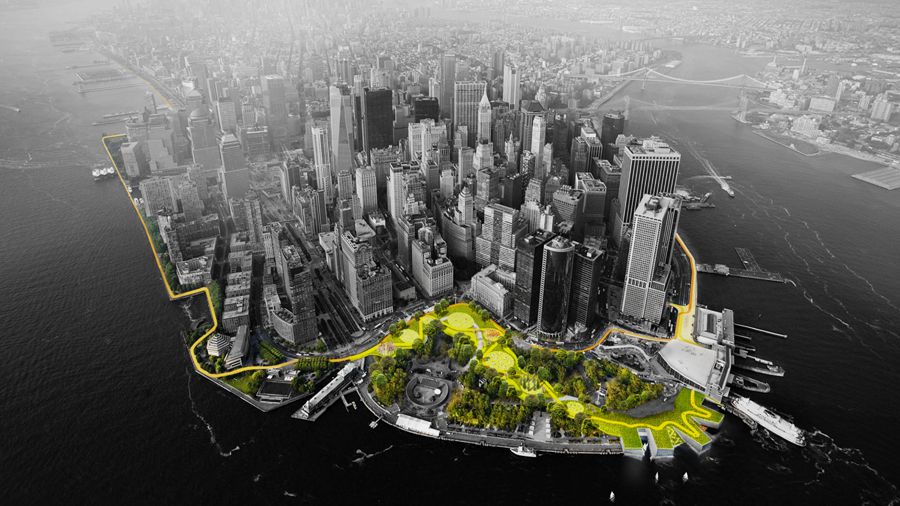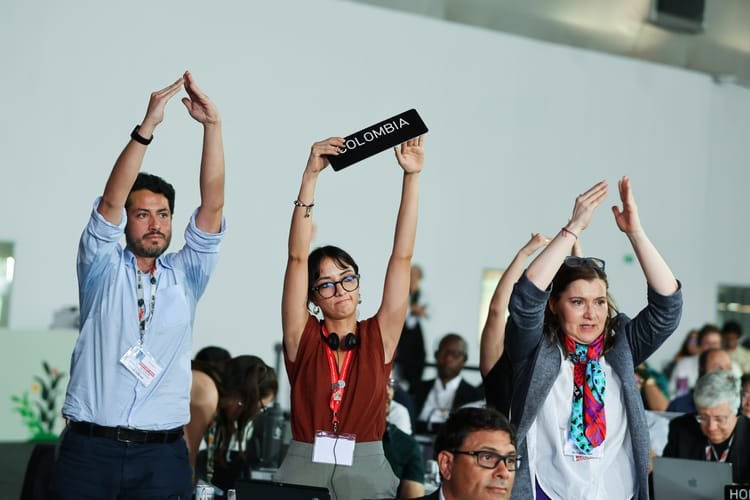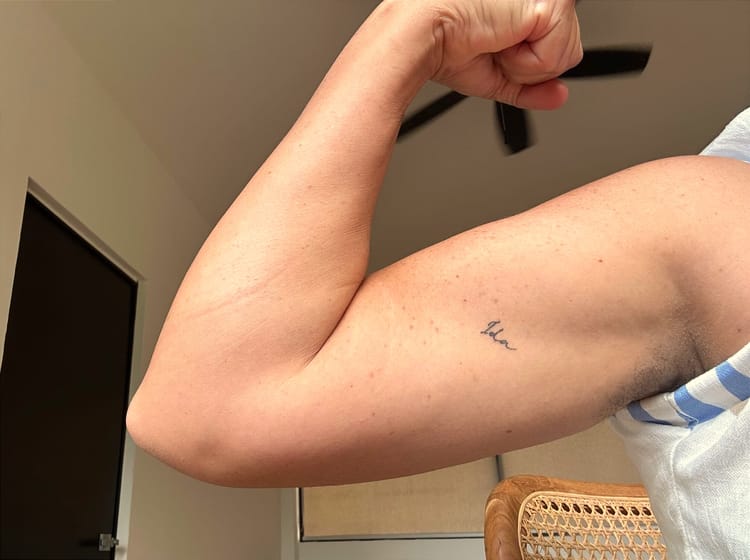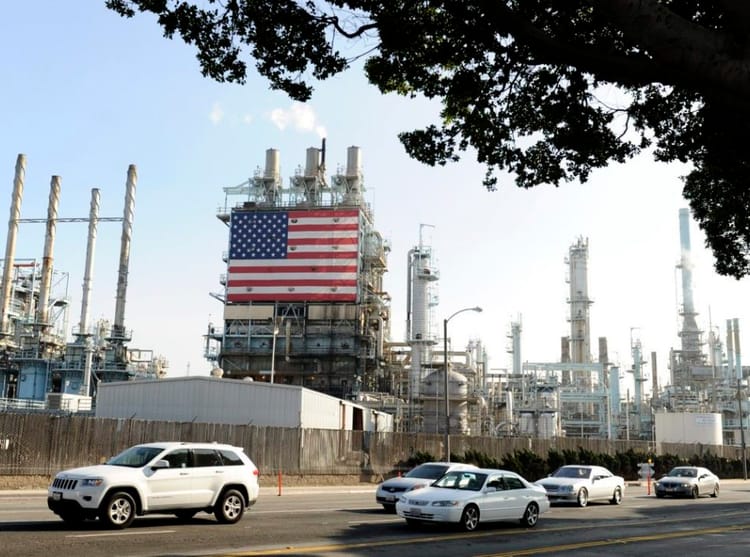Damages: Protecting Communities from Climate Change Is Astronomically Expensive

By Karen Savage and Amy Westervelt
A proposed series of sea barriers to protect New York’s harbor—which includes parts of New Jersey— from future storm surges? $52 billion.
Reducing risk of future damage to Rhode Island’s coast? More than $254 million.
Hawaii is looking at “an estimated $30 billion to relocate or elevate state roads and bridges, address impacts to airports, and protect the state’s commercial harbor facilities,” Edward Sniffen, Hawaii’s Department of Transportation (DOT) deputy director for highways, told Congress last year.
And although those price tags are staggering, they are a tiny fraction of what’s needed to protect the most vulnerable parts of the country from ever-increasing climate impacts. While some funding could come from a federal pot set aside last year by the Biden administration (thank you federal taxpayers), the way it stands now, state and local taxpayers will have to foot the rest of the bill. Meanwhile, no mechanism exists to collect from the companies that ensured we would delay acting on climate for as long as possible.
That’s why dozens of municipalities across the United States have filed climate liability lawsuits against fossil fuel companies. The goal is to shift some of the cost from taxpayers to the fossil fuel companies, which have known for decades that climate change is caused by the burning of their products and spent tremendous amounts of money and energy to stop anyone from doing anything about it.
Climate litigation made its way into the latest round of reports from the Intergovernmental Panel on Climate Change for the first time ever earlier this year, in the report on mitigation and adaptation. The IPCC noted that there are currently more than 1800 active climate cases around the world, more than 1300 of which have been filed in the United States. You know your climate policymaking mechanisms are broken when you’re the world leader in climate litigation.
More than two dozen of those cases make a climate liability argument. They grabbed a lot of headlines when they first began a few years ago, but have all but disappeared from the media although they’re still very active in courtrooms across the country.
“What winning means is an award of costs to the communities, of the costs of dealing with climate change—so if you think about a coastal community it's the cost of building the seawalls to protect the roads and the property along the coast and similar costs,” said Vic Sher, an attorney who represents several of the municipalities that have filed suits.
Over the next few months we’re going to be taking a look both here and on the podcast at where these cases are now, whether and how they still matter given the state of the Supreme Court, and how they compare to a batch of climate fraud cases also making their way through the courts at the moment.
What is climate liability?
But first, what is climate liability?
Most of these cases involve public nuisance claims, which differ from private nuisance, which most of us are more familiar with.
“So private nuisance is where I'm your neighbor and I'm cranking Twisted Sister on my stereo late at night and keeping you awake—that's private nuisance,” says Doug Kysar, a professor of law at Yale Law School and faculty co-director of the Law, Ethics and Animals Program.
Public nuisance is an entirely different problem (or tort in legal terms).
“It's a lawsuit that can be brought by a governmental agency like a state or a city in order to protect breaches of the public peace,” Kysar says, adding that historically governments used this strategy to regulate harmful activity prior to the enactment of regulations.
“What would happen instead is that the city would find the brothel or the polluting factory or the stinking hog farm and they would sue them and they would say, you've got to abate this nuisance because it's causing harm to the general public well-being,” Kysar explains.
More recently, municipalities have applied that strategy to climate change.
“When the places like Baltimore or Santa Clara or Imperial City, when those governmental plaintiffs are suing the carbon majors, they're invoking this long standing, many, many centuries long tradition in Anglo American common law of governments being able to protect the peace in the absence of other acts or statutes or regulations when an actor's actions are causing massive public harm,” Kysar says. “We've got massive public harm and we've got an utter vacuum of action by the other governmental branches.”
Climate liability suits involve more than public nuisance claims, though, according to Pat Parenteau, Emeritus Professor of Law and Senior Fellow for Climate Policy in the Environmental Law Center at Vermont Law School.
“We're talking about state common law-based tort and consumer rights cases,” he explains. As a legal scholar, Parenteau has consulted pro bono on some of the climate liability cases.
“The failure to warn-based claims and duty of care type claims are coming to the forefront,” Parenteau says.
He described those arguments as more straightforward: “a classic, bedrock tort: You lied and you caused damage and you hurt me. Now pay me. I mean, it's really that simple duty breach.”
First line of defense: Jurisdiction
The fossil fuel company defendants, which have adamantly denied the allegations made in the suits, are pulling out all the stops in an effort to wrangle their way out of them.
Their first move was to try to get the cases moved from state courts, where they were filed, to federal court, where the companies thought they’d have a better chance at getting the cases dismissed.
Using a little-known law—the Federal Officer Removal Statute—the companies argued that they were acting as officers of the federal government because some of their oil production is on land leased from the federal government. That argument and others were rejected by multiple federal courts. Federal officer arguments are eligible for appellate review, and the lower court rulings were upheld in most Circuit Courts.
But the oil companies argued that the appellate courts should have reviewed all of their other arguments for moving the cases to federal courts, too. The U.S. Supreme Court last year agreed, ruling that the cases must go back to the appellate courts for further review.
Thus far, that ruling has bought the companies some time, but not much else.
A three-judge panel in the Tenth Circuit was the first to reject the fossil fuel companies’ other arguments, sending a suit brought by three Colorado communities against Exxon and Suncor back to state court. The appellate court then denied a request for an en banc, or full court, rehearing of the decision, prompting an appeal to the U.S. Supreme Court by Suncor and Exxon.
In their petition, Suncor and Exxon told the high court that allowing the cases to be heard in state court “opens the door to countless potentially conflicting state-court lawsuits applying state nuisance law to claims seeking redress for the global phenomenon of climate change.”
Attorneys for the plaintiff communities continue to maintain that their case involves state law claims for harms done to Colorado communities. The Supreme Court in early October asked the Department of Justice to weigh in and it remains to be seen whether the high court will eventually take the case up or not.
Meanwhile, the 1st, 4th, 9th and most recently 3rd Circuits have all affirmed district court remand orders in various cases and denied petitions by fossil fuel defendants for en banc rehearings, keeping the cases in state court.
Federal court judges have returned cases filed by Connecticut and Massachusetts to state court as well, and the 2nd and 8th Circuits are now considering similar appeals by the fossil fuel companies.
A US district judge recently ruled that cases filed by two Maryland communities belong in state court, and appeals by the companies are likely. Other cases filed by the District of Columbia, Vermont, NYC, Charleston, San Francisco and Oakland are awaiting decisions by their respective U.S. district courts.
As they have in the Colorado cases, it is expected that the fossil fuel defendants will eventually ask the Supreme Court to review all appellate court rulings that the cases belong in state court.
It might take a while, but Parenteau predicts all will eventually play out in state courts.
“Then you're going to see motions to dismiss based on preemption and that's when the industry is going to try to get back to the Supreme Court,” Parenteau said. “The last thing in the world they want is for one of these cases to get to a jury. So they're going to do everything they can to get a case back to the Supreme Court and get a kill shot. That's their best hope.”
What’s next
Thus far, those of us waiting to dig into whatever documents might be unearthed during discovery have been largely disappointed by the procedural maneuverings, which have little to do with the actual allegations in the suits.
But while the cases have crept ahead slowly, climate change has not and neither has the financial burden faced by municipalities. In the coming weeks, we’ll be taking a closer look at how climate change is already affecting the communities that are plaintiffs in these cases, and the challenges they will face in coming years.
While all of the cases will likely get more interesting, there are a few we’re particularly keeping our eyes on.
The City of Boulder and the Boards of County Commissioners of Boulder and San Miguel Counties filed suit against Exxon and Suncor in 2018, alleging claims of public nuisance, private nuisance, trespass, unjust enrichment, and deceptive trade practices under the Colorado Consumer Protection Act. It was the first case to be returned to state court after last year’s Supreme Court ruling.
The companies have since asked the Supreme Court to weigh in again, this time maintaining that even though the municipalities’ have alleged state law violations, their claims are actually governed by federal law.
“The wild card is the Supreme Court—is the Supreme Court going to let these cases go to jury?” Parenteau said.
If the high court declines to take up the case, not only is the Colorado case poised to move forward in state court, but a slew of others will likely follow.
That includes a case filed by Rhode Island, where parts of the state were recently inundated with 11 inches of rain in just two days. The state filed suit in 2018, alleging that 21 companies—including oil giants Exxon, BP, Shell, Chevron, and ConocoPhillips—contributed to sea level rise and violated state laws by knowingly contributing to climate change while failing to warn Rhode Island citizens about the risks posed by their products. The suit makes claims of public nuisance, strict liability for failure to warn, strict liability for design defect, negligent design defect, negligent failure to warn, trespass, impairment of public trust resources, and violations of the State Environmental Rights Act. Like the Tenth Circuit in the Colorado case, the First Circuit undertook the expanded review ordered by the Supreme Court and still determined the case belongs in state court. A request by the fossil fuel companies for further review was recently rejected.
Another case waiting to get the go-ahead from the Supreme Court was filed by the City and County of Honolulu in 2020 against BP, Chevron, Shell, ExxonMobil, ConocoPhillips, the BHP Group, Marathon and Aloha Petroleum. That case asserts claims of public nuisance, private nuisance, strict liability for failure to warn, negligent failure to warn, and trespass.
It also has an interesting twist. Sunoco subsidiary Aloha Petroleum in August filed a separate suit against AIG’s National Union Fire Insurance Company of Pittsburgh for alleged breach of contract after the insurer refused to cover the legal costs associated with the case and a similar suit filed by Maui County.
In its reply, National told the court that because municipalities are alleging that Aloha promoted its products while intentionally hiding the hazards they posed to the climate, the policy, which covers only accidental damages, does not apply.
National also contends that Aloha was required to provide notice of the damage as soon as possible.
“The alleged Occurrence(s) was/were not reported when Aloha allegedly became aware of them decades ago, and Aloha has not provided any information beyond the Underlying Complaints,” National told the court.
The Honolulu case is also the one in which Chevron made a novel new argument: the “everybody knew,” defense, in which the company’s lawyers, from the firm Gibson Dunn, pointed to various pop culture references to global warming in the 1990s as proof that it held no special knowledge about climate change, nor had it suppressed information about the problem, because otherwise…how would references to it end up in Batman?
Meanwhile, the Ninth Circuit determined in July that Honolulu’s case belongs in state court, citing its own similar ruling in cases filed in California, as well as several other appellate court rulings.
Of course, if the Supreme Court agrees to hear the companies’ argument in the Colorado case, all of the other climate liability cases will slow to a crawl until that plays out. But if the high court declines to take up the Colorado case, they could soon be moving ahead in state court.
Which doesn’t mean they won’t wind up back at the Supreme Court—as Parenteau notes, the industry has a few more arguments up its sleeve before these cases actually get into discovery, or in front of a jury. The fact that any climate case is likely to end up in front of a Supreme Court bench with a penchant for dismantling the regulatory system has a lot of folks feeling like climate litigation is pointless, but EarthJustice’s Sam Sankar argues that it’s more important than ever. “I think the courts are going to remain super relevant,” he says. “And if anything more relevant.”
“The old model of environmental law,” he explains, “was to fight at a purely regulatory level, you know, to just sort of go to court and say, ‘Here's the Clean Air Act, we're gonna Sue EPA for not issuing stricter regulations on this,’ or if the regulations come out and industry challenges them to be in there to say, ‘Hey, wait, these regulations are fine.’ With a highly deregulatory court that’s skeptical of agencies, that kind of litigation is gonna be harder. And we’re going to have to be more thoughtful and cautious in the cases that we bring, and more aggressive in our defense of regulations that are on the books and statutes that are on the books. On the other hand, the climate justice and environmental justice movements are deeply dovetailed with the need for systematic change in the way we regulate pollution and climate, and those cases are gonna be both increasingly important and they're going to continue to be very viable and very powerful.”





